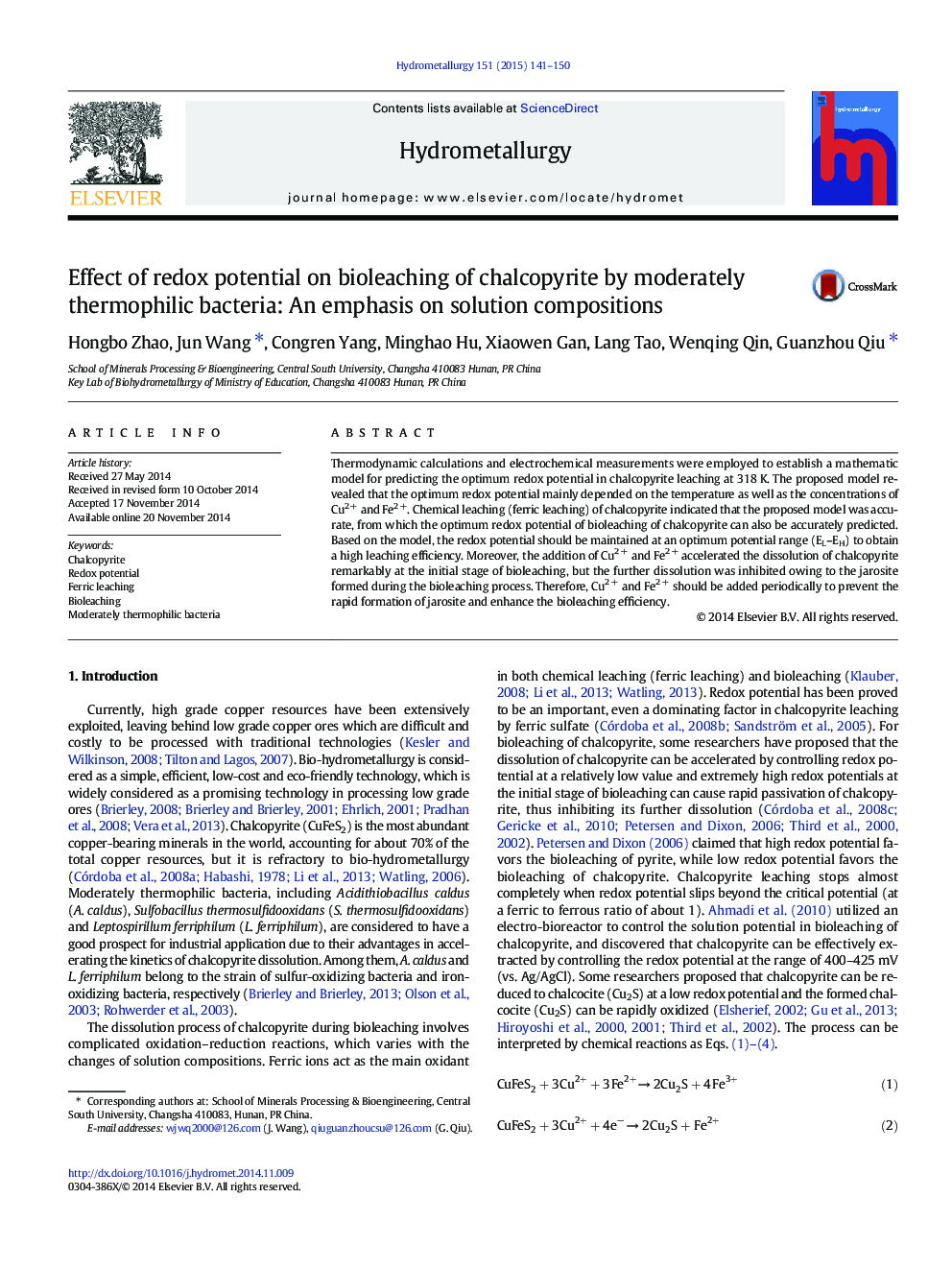| Article ID | Journal | Published Year | Pages | File Type |
|---|---|---|---|---|
| 212080 | Hydrometallurgy | 2015 | 10 Pages |
•A model was used to predict the optimum redox potential in chalcopyrite leaching•The proposed model was mainly dependent on the concentrations of Cu2 + and Fe2 +•Redox potential should be higher to enhance chalcopyrite bioleaching by A. caldus•Redox potential should be smaller to enhance the bioleaching by L. ferriphilum•Cu2 + and Fe2 + should be added periodically to enhance the bioleaching process
Thermodynamic calculations and electrochemical measurements were employed to establish a mathematic model for predicting the optimum redox potential in chalcopyrite leaching at 318 K. The proposed model revealed that the optimum redox potential mainly depended on the temperature as well as the concentrations of Cu2 + and Fe2 +. Chemical leaching (ferric leaching) of chalcopyrite indicated that the proposed model was accurate, from which the optimum redox potential of bioleaching of chalcopyrite can also be accurately predicted. Based on the model, the redox potential should be maintained at an optimum potential range (EL–EH) to obtain a high leaching efficiency. Moreover, the addition of Cu2 + and Fe2 + accelerated the dissolution of chalcopyrite remarkably at the initial stage of bioleaching, but the further dissolution was inhibited owing to the jarosite formed during the bioleaching process. Therefore, Cu2 + and Fe2 + should be added periodically to prevent the rapid formation of jarosite and enhance the bioleaching efficiency.
